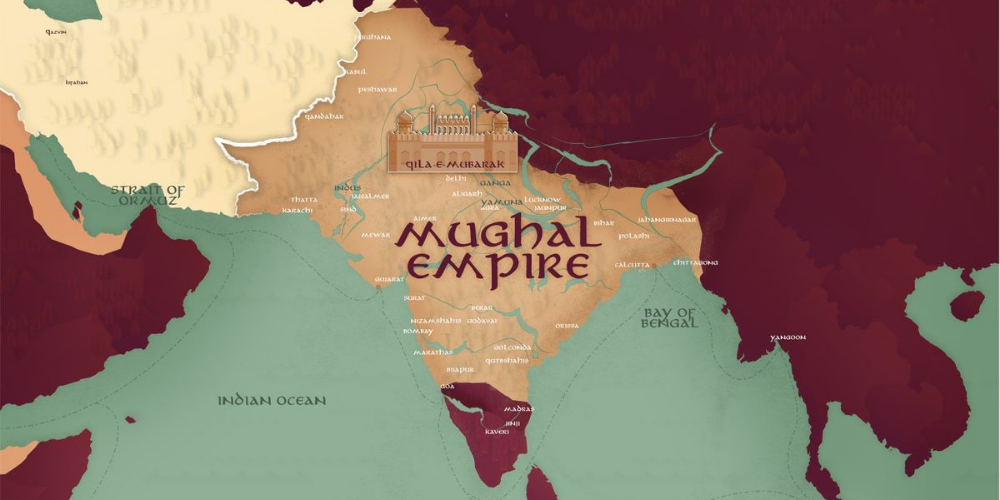- Umang Sagar
- Special Note
Mughal Empire
1. Reign Of Babur :-

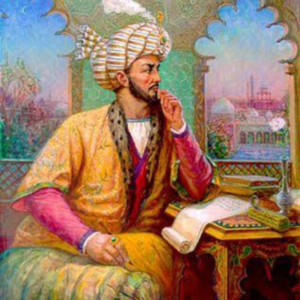
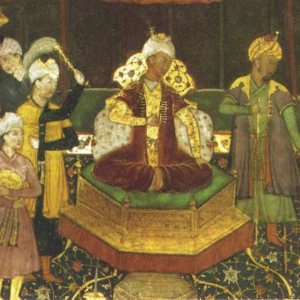
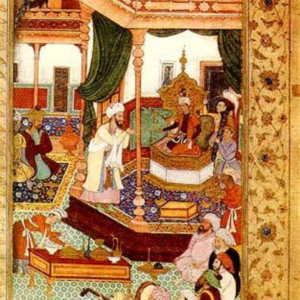
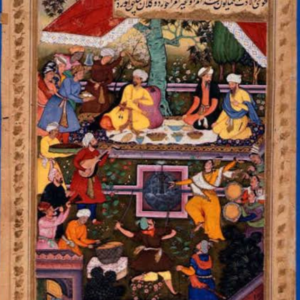
Muhammad Zahir Ud Din Babur was born on 14th february 1483 in Andijan, Fargana Valley (Present day Uzbekistan). His father name was Umar Sheikh Mirza II and mother name was Qutlugh Nigar Khanum. Babur was very enthusiastic as well as optimist from beginning. When he was only 14-15 years old, he had an army of 250-400. He was the founder of Mughal Empire and first emperor of Mughal dynasty.
Delhi sultanate was working before 1526. And the last ruler of Delhi sultanate was Ibrahim Lodi.
He had a cousin brother named Daulat Khan Lodi.
Ibrahim Lodi had given a Lahore Subedari to his cousin brother Daulat Khan Lodi.
Ibrahim Lodi was ruling from Delhi. Daulat Khan Lodi wants to sit on the throne of Delhi. He had an evil eye on his cousin brother Ibrahim’s throne.
Daulat Khan Lodi wrotes a letter to Babur in Kabul and he requested Babur to attack on Delhi. And the reason he writes a letter to Babur because Babur was very much famous to his neighbouring provinces. And people believes that Babur fights like Mangolians (Mongolians are very merciless in fighting a war).
Daulat Khan Lodi requested Babur to come and he also offered his army to support Babur. So that Babur attack on Delhi.
Babur along with Daulat Khan Lodi arrives Delhi, he attacked Delhi and killed Ibrahim Lodi in the Battle of Panipat-1, 1526.
(Remember:- First battle of Panipat was fought between Babur and Ibrahim Lodi in 1526).
Babur liked the environment (weather) of Delhi and decided to stay in Delhi.
=> Battles Fought By Babur :-
As babur arrived in India he fought 4 consecutive battles in four years and they are as follows:-
1. Battle of Panipat
In 1526 AD (Against Ibrahim Lodi)
2. Battle of Khanwa
In 1527 AD (Against Rana Sanga)
3. Battle of Chanderi
In 1528 AD (Against Medini Rai)
4. Battle of Ghaghra
In 1529 AD (Against Afghani Forces)
And all 4 battles were consequtively won by Babur.
Babur was the first who uses cannons during war in Hindustan.
According to Babur, Krishna Dev rai was the most powerful king in Hindustan. (Krishna Dev Rai was the ruler of Vijay Nagar empire and the most powerful in the entire Vijay Nagar empire).
Babur autobiography was written in Turkish language. In the whole Mughal sultanate, only 5% books are written in Turk language. And rest are written in Persian language.
Official language of Mughal was Persian.
Babur was the founder of Mughal empire. His first attack in Hindustan was in the year 1519 ad in Bhera (Presently in Rajasthan). And after the attack he returned to Kabul.
- Babur died in the year 1530.
=> Titles :-
- He was given the Posthumus title of Firdaws Makani (Dwelling paradise).
=> Tombs of Babur :-
- Tomb in Agra (He was buried in arambag, agra fort)
- Tomb in Kabul (Permanent tomb).
=> Autobiography on Babur :-
- Baburnama (Turkish Language).
2. Reign Of Humayun :-

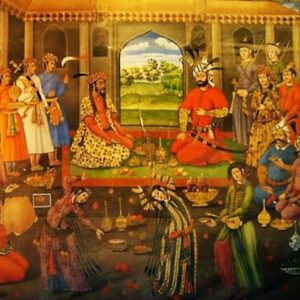
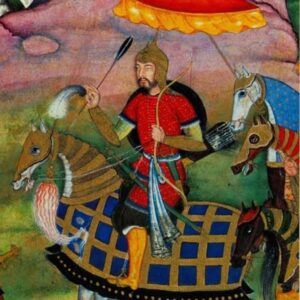
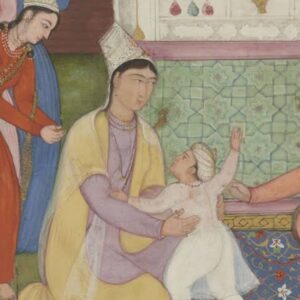
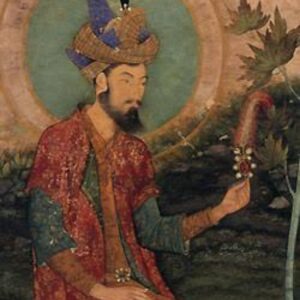
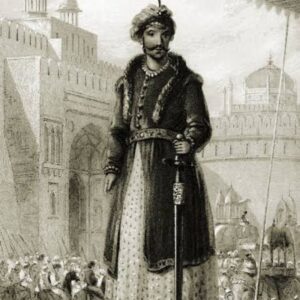
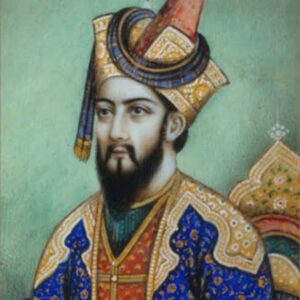

The real name of Humayun was Nasir Ud Din Muhammad. He was born on 6th march 1508 and died on 27 january 1556. Humayun was the son of Zahir Ud Din Muhammad Babur.
Humayun life was very struggling.
When Humayun was set to the throne, the very next year he had a battle. The battle of debra (in 1531) against Sher Shah Suri and Humayun won this battle.
In 1533, Humayun established a city near Delhi called Dinpanah city. In the same city, Sher Shah Suri built a library called Sher-e-Mandal.
In 1539, Humayun was attacked by Sher Shah Suri. And Humayun was defeated by Sher Shah Suri in 1539, Battle of Chausa.
In the very next year 1540, Humayun was again badly defeated and ran away to Iran and ask for shelter in the Iranian court by Khalifa of Iran.
=> Visit of Iran :-
Khalifa of Iran was Shah Tahmasp on that time. As Humayun reached Shah Tahmasp fort, he requested Khalifa to hide him. And Shah Tahmasp told him that we will help you only on one condition you have to convert yourself in Shia.
(Remember:- Humayun was Sunni Muslim)
Humayun accepted the condition and opt shia and as he opted shia he got a shelter in Iranian court.
On that time, there was a persian shia named Shaikh Ali Akbar Jani (Preceptor to mughal Prince Hindal Mirza) whose daughter was Hamida Banu who was born in 1527.
As Humayun got shelter in Iranian court as time passed by he got attracted towards Hamida Banu and later both fell in love with each other and decided to marry. But at time in Iran there was a law that no one is allowed to fell in love and if someone fell in love then they have to live the country. As the two were in love with each other they were told to leave the country.
Humayun and Hamida leave Iran and returned to India in the year 1542. As they were returning Hamida was pregnant and that time her condition becomes severe and on 15th october 1542 Raja Veer Sal gives shelter to Humayun and Hamida begum in his royal palace. Hamida gave birth to Jalaluddin Muhammad (Akbar).
=> Most important battles fought by Humayun :-
- Battle of Debra – in 1531.
- Battle of Chausa- in 1539.
- Battle of Kannauj/ Bilgram- in 1540.
- Battle of Sarhind- in 1555.
=> Humayun were four brothers namely :-
- Humayun (Himself)
- Kamran- Subedar of Lahore.
- Hindal- Subedar of Meerut.
- Askari- Subedar of Meerut.
When Sher Shah Suri defeated Humayun and ruled upto Kannauj. So the Subah of meerut was under the control of Sher Shah Suri and both Hindal and Aksari returned to Lahore to their brother Kamran (On that time Lahore Subah was ruled under Kamran).
And when Humayun returned to Hindustan and learned that the province of Lahore is under the command of his brother Kamran. He asked help from Kamran with his army. All 4 brothers had a discussion and later Kamran, Hindal, and Aksari agreed to help Humayun along with their armies to fought war against Sher Shah Suri.
In the year 1555 at the battle of Sarhind they attacked Sikendra Lodi (On that time he was rulling. He was the son of Sher Shah Suri).
In the year 1555, Humayun won the battle and sits on the Delhi throne and re-established Mughal Sultanate rule.
Humayun is known as the most struggling ruler of mughal empire.
Special Edition Of Sher Shah Suri

The real name of Sher Shah Suri was Fareed Khan. Sher shah suri was born on 1486 and died on 22 may 1545. When he was 12 years of age, he worked in Shah Lohani Sultanate.
His father name was Hasan Khan and lived in Sasaram (In Bihar). Hasan khan was a Zamindar by profession.
Sher Shah Suri accepted the title “Sher Shah” after the Battle of Chausa in 1539.
=> Story of accepting Sher Shah Title:-
During the battle of Chausa in 1539 Sher Shah Suri was doing rest in his camp. Suddenly a tiger attacked in his camp and jumped on him where he was residing. He took his sword and in the blink of the eye he cuts the tiger in two halves. This shows that how mighty warrior he was. And the army of Sher Shar Suri was so impressed with him that they had given him a title ‘Sher Shah- Jisne sher pe jeet hasil ki ho’
[Remember: Malik Mohammad Jaisi wrote ‘Padmavat’ in the same period]
Sher Shah Suri belongs to Lodi dynasty. His son name was Sikendra Lodi.
Sher Shah Suri was the first ruler who defeated any Mughal ruler.
Sher Shah Suri introduced Rupaya (coins). Rupaya coins were in goldand silver. But the first coin was in silver.
[1 grane=0.6 gram].
=> Important establishments of Sher Shah Suri :-
- Sher Shah Suri established Qila Kuhana near Delhi.
- Sher Shah Suri established Sadak-e-Azam(He made a road starting from Sonar Gaon(Bangladesh) to Peshawar (Pakistan). On that time, Peshawar was known as Purushpur.
- Later britishers renamed ‘Sadak-e-Azam’ road as ‘Grand Trunk Road’.
=> Grand trunk roads has other names such as :-
- Uttarpath,
- Sadak-e-Azam,
- Shah Rah-e-Azam,
- Badshahi Sadak,
- The long walk road
In 1545, Sher Shah Suri attacked Kalinjar and was died in the same year due to technical failure of Cannons.
After that Sikendra Shah Suri sits on a throne. And in 1555, Humayun defeated Sikendra Shah Suri and re-captured the Delhi throne.
=> Tomb :-
Sher Shah Suri tomb is in Sasaram, Bihar, India.
3. Reign Of Akbar :-


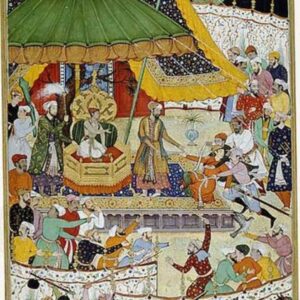
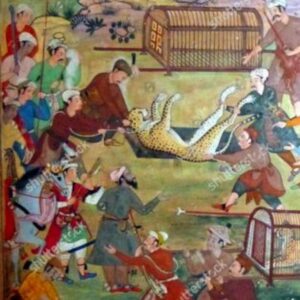

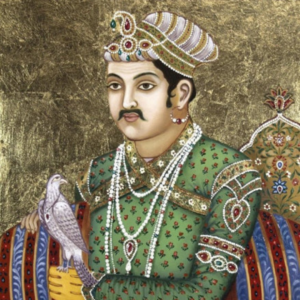
Jalaluddin Muhammad is commonly known as ‘Akbar The Great’. Akbar was born on 15th october 1542.
Akbar was the son of Humayun. And her mother name was Hamida Bano.
Akbar was born in Amarkot in Raja Veer Sal palace.
He was just 14 years of age when he started to rule Mughal Empire.
1556 was proved to be a turning point in Akbar’s life.
Battle Of Panipat 2 :-
It was fought between Akbar and Hemu.
Hemu was the Hindu commander of Sikendra Shah Suri.
(Hemu also accepted a title called ‘Vikram Aditya’)
When Humayun died, Bairam Khan (Mughal commander of that time) called and make him the king.
Jalaluddin Muhammad was lead and under the controlled of Maham-Anga.
[Maham-Anga son was Adham Khan]
=> After the battle of Panipat-2, Akbar put 3 conditioned infront of Bairam khan :-
- Either you take Kalpi Subedari and served as a Kalpi’s governor.
- Join Gupt Char bivaagh (Intelligence Beurau).
- Go to Hazz Yatra.
- After listening these conditions, Bairam Khan understands that Maham-Anga was behind this and she initiated Jalaluddin to put these conditions infront of Bairam Khan.
{Maham-Anga doesnot like Bairam Khan}
- In 1560, some Afghans killed Bairam Khan.
[As Bairam Khan accepted the 3rd condition to go to Mecca, Jalaluddin Akbar ordered Bairam Khan to leave for Mecca and sent Peer Muhammad to kill Bairam Khan. So that he can capture her wife Salima and puts her into his harem. But it wont go with the plan and Bairam Khan returned to Akbar stating that he was attacked.
Akbar did all this to Bairam Khan on the initiation of Maham Anga because she doesnot like Bairam Khan and wants her son Adham Khan to takeover as emperor which was not possible due to Bairam Khan as he was very honest towards Mughal Sultanate. Later 2nd time Akbar sent Bairam Khan to Mecca and Bairam Khan killed by Afghans on the way to Mecca].
- During 1560-62, Akbar was busy learning war Tactics. On that time Maham-Anga take care of Mughal Sultanate. And due to this, (1560-62) tenure was known as Haram Government because Lady ruled at that time.
{In Hindi, Haram Government is known as Peticot Government}
War Succession And Marriage :-
1. 1556- Battle of Panipat-2 against Hemu.
2. 1561- Battle of Malwa against Baaz Bahadur and later Baaz Bahadur was collided with Mughals.
3. 1562- Treaty of Aamer with king Bharmal.
4. 1569- Battle of Ranthambhor and Bundelkhand.
5. 1573- Battle of Gujrat against Muzzaffar Shah.
6. 1576- Battle of Haldighati against Maharana Pratap.
[Remember:- In reality, the war fought between Man Singh (Representing Mughals) and Maharana Pratap.
Man Singh was Jodha Bai’s brother’s son. As Man Singh was a very good fighter so Jalaluddin gave man singh the post of Commander.
Maharana Pratap was the first and last ruler who never accepted Jalaluddin’s terms and conditions. Thats why he is called ‘Maharana Pratap The Great’].
7. 1581- Battle of Kabul against Mirza Hakim.
8. 1586- Battle of Kashmir.
9. 1592- Battle of Sindh.
10. 1599- Battle of Ahmed Nagar against Chand Biwi.
11. 1601- Battle of Asirgarh.
Raja Bharmal of Aamer was the first Rajput King to accept Jalaluddin’s offer to run his kingdom under Mughal’s Umbrella.
Raja Bharmal eldest daughter name was ‘Harka Bai’. She is also known as Heer Kumwari.
Jalaluddin accepted the marriage proposal proposed by Raja Bharmal for her elder daughter Harka Bai. And this treaty is called the “Treaty Of Mughal-Rajput Alliance”. And after marriage, Jalaluddin gives a title to Harka Bai as ‘Jodha Bai’.
Works And Buildings :-
1. Abolished slavery system in 1562.
2. Abolished tax levied on Religious Pilgrim in 1563.
3. Abolished Jazia tax (Tax taken by Brahmins) in 1564.
4. In 1571- established Fatehpur Sikri City and made it as his capital.
5. In 1575- established Ibadat Khana.
6. In 1578- Ibadat Khana (Parliament Of Religion) was opened for everyone.
7. In 1582- Jalaluddin introduced Din-e-Ilahi (Only Birbal accepted this).
8. Introduced Mansab system (Operated by Todal Mal)
[Remember– Todar Mal was Akbar’s Finance Minister]
9. In Mansab system salary system was introduced (minimum-10 and maximum-12000)
[Mansab system was like today’s one rank one pension where minimum salary was 10 and maximum was 12000].
10. After this, people gave Jalaluddin the title of ‘Akbar’.
9 Jewels Of Akbar :-

1. Birbal (Mahesh das) : Advisor
(He belongs to Kalki)
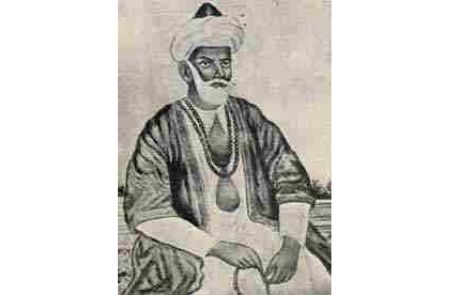
2. Tansen (Ram Tanu Panday) : Musician
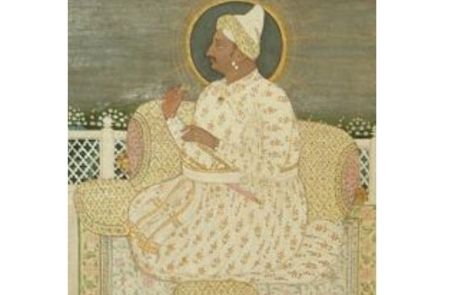
3. Todar Mal : Finance Minister
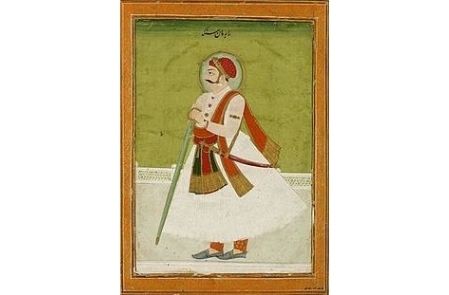
4. Man Singh : Chief Commander
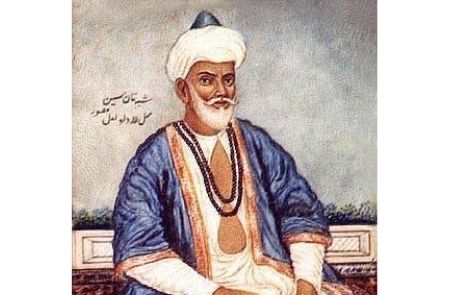
5. Abdul Rahim Khan-e-Khana : Poet (Son of Bairam Khan)
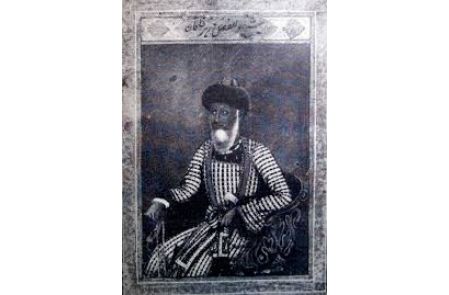
6. Abul Fazl : Poet
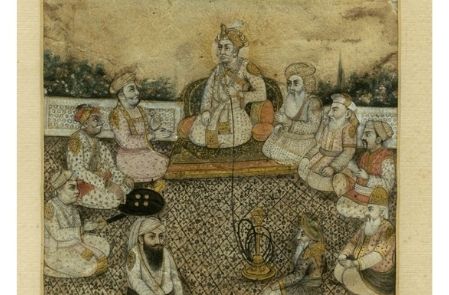
7. Bhagwan Das : Poet
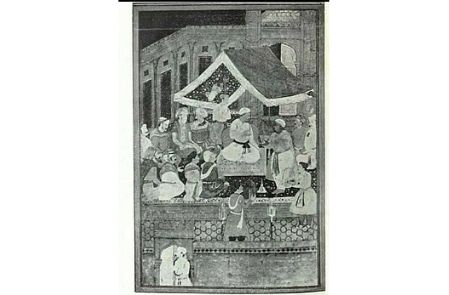
8. Faizi : Poet

9. Mulla-do-Pyaza : Cook
[Remember: Abdul Rahim Khan-e-Khana and Abdul Rahim were brothers and both of them written two books ‘Ain-e-Akbari’ and ‘Akbarnama’]
[Abdul Rahim Khan-e-Khana translated ‘Baburnama’ in persian language and known as ‘Tuzuk-e-Babri’.]
- Kabir Rahim was Krishna devotee and he was the son of Bairam Khan.
Court And Culture :-
1. Diwan-e-Aam : Where normal people attains court. And normal discussions are taken place.
2. Diwan-e-Khas : All important things like politics, war, etc are discussed.
3. Tuladan system : At any happy moment, jewels and money are distributed among poor people.
Buildings Made By Akbar :-
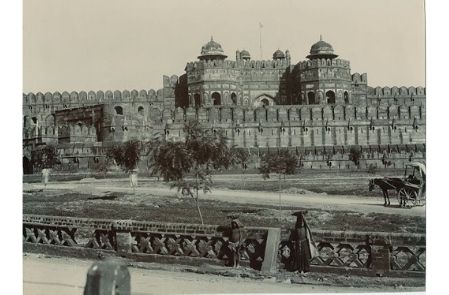
1. Agra Fort
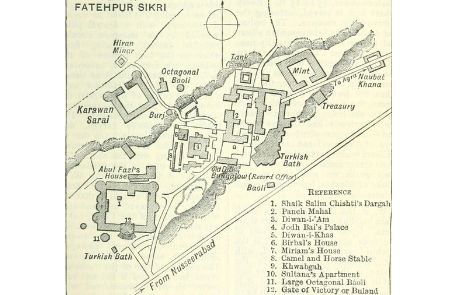
2. Fatehpur Sikri
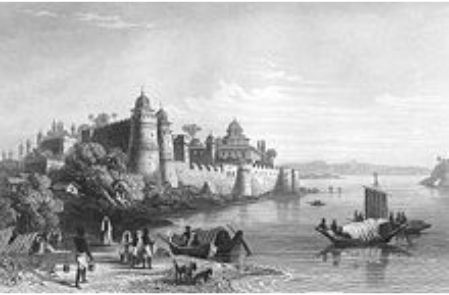
3. Allahabad Fort

4. Buland Darwaza
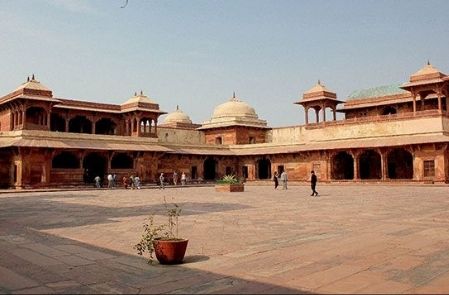
5. Jodha Bai Mahal, Fatehpur Sikri
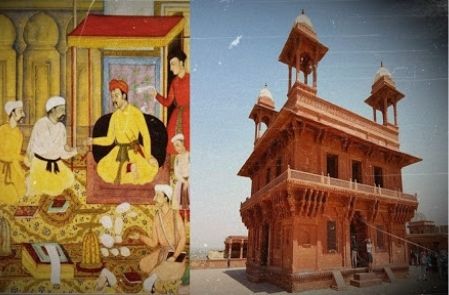
6. Ibadat Khana
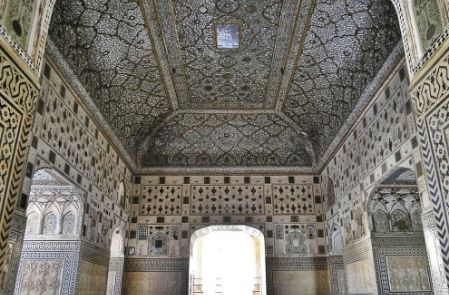
7. Shish Mahal, Aamer Fort
-
According To Abdul Qadir Badayuni “ Akbar” was enemy of the Islam.
[Remember- Abdul Qadir Badayuni was first grand mufti of India and a Historian of the Mughal Empire]
[ Grand Mufti- Chief legal advisor to the emperor ]
Reign Of Jahangir :-

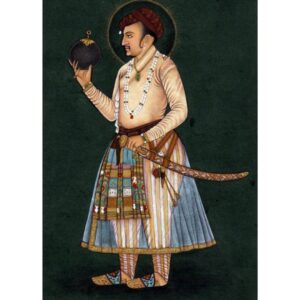
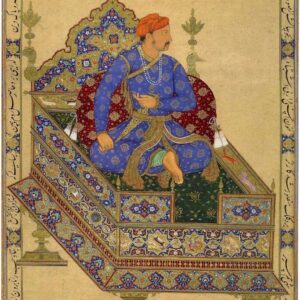

- Jahangir childhood name was Salim (Salim name was given from Sheikh Salim Chisti)
=> Marriages :-
1. 1585- With Manbai.
2. 1587- With Jagat Gosai.
3. 1611- With Mehrunisa (She was a dancer, also known as Anarkali / Noor Jahan).
- ‘Itimad-Ud-Daulah’ title was given to Mirza Ghiyas beg by Jahangir.
[Mirza Ghiyas beg was born in Tehran and belongs to the family of poets and high officials. Mirza Ghiyas beg was an important Persian official in Mughal Empire. His children served as wives, mothers and generals of Mughal emperor]
Arjun Dev provokes Khusroo to revel against the decision of Akbar to made Jahangir as king of Mughal Sultanate.
Jahangir punished hang till death to 5th Guru Arjun Dev.
Jahangir also called ‘King Of Justice’.
Paintings are at its best during Jahangir’s tenure.
In 1608, captain Hawkings was the first britisher to come to Jahangir’s court to take the permission to set up the factory.
In 1615, Sir Thomas Roe was the 2nd britisher to come to Jahangir’s court.
=> Autobiography :-
- Tuzuk-e-Jahangiri
=> Tomb:-
- Lahore, Pakistan.
Reign Of Shah Jahan :-

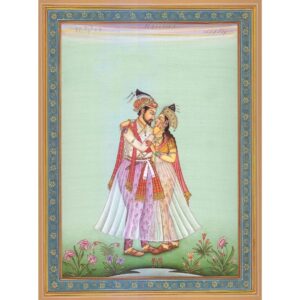

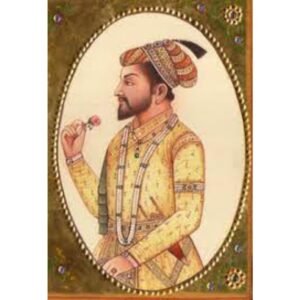
Shah Jahan childhood name was Khurram. His main wife name was Arjumand Bano (Also known as Mumtaz).
Shah Jahan Tenure was also known as ‘The Golden Period Of Buildings’.
During Shah Jahan Tenure, the Mughal Empire reached its Zenith in prosperity and luxury.
In 1632, he fought the battle against Portugeese to abolish the impact of them and took over Hoogli River.
Shah Jahan established the city named Shahjahanabad in Delhi.
To become an Emperor, Aurangzeb arrested his father Shahjahan in Agra Fort in 1658.
Shah Jahan died in the year 1666.
Shah Jahan had four sons namely :-
1. Dara Sikae
2. Aurangzeb
3. Suja
4. Murad
Buildings :-
1. Built Takh-e-Tans in 22nd march 1635.
[Tans here means Peacock]
2. Built Nagina Masjid in 1635.
3. Built Taj Mahal (1631-1653): It took 22 years to be completed. (Around 50000 workers +1000 elephants were involved)
- Main architect of Taj Mahal : Ustad Ahmad Lohri and Ustad Isha Khan.
- Shah jahan cuts their heads as Taj Mahal got completed.
4. Built Red Fort in 1638.
5. Built Jama Masjid in 1644.
6. Built Moti Masjid (Agra) in 1648.
Reign Of Aurangzeb :-



Aurangzeb was born in the year 1616 in Gujrat. Aurangzeb was the son of Shah Jahan. Aurangzeb’s wife name was Dilras Bano. She was an Iranian woman.
Aurangzeb accepted many titles such as: Zinda Peer, Shahi Darvesh(Fakir), Alamgir.
Aurangzeb defeated his elder brother Dara Sikae in the battle of Dev Rai in 1659.
After that Aurangzeb killed his brother on the behalf of condemn over Islam.
Dara Sikoh (Elder brother of Aurangzeb) translated Bhagwat Gita in Persian language.
Works Of Aurangzeb:-
1. In 1659, Organised coronation ceremony in Red Fort.
2. In 1669, He abolished Jharoka Darshan.
3. In 1670, He abolished Tuladan system.
4. Banned consumption wine in his tenure.
5. Abolished Nauroz Festival.
6. In 1679, He re-imposed Jajiya tax.
Buildings :-
1. Built Moti Masjid in Redfort, Delhi.
2. Base of bibi ka maqbara (1651-1661) in Aurangabad.
[Bibi ka Maqbara was built by Aurangzeb’s son in the memories of Dilras Bano (Aurangzeb’s wife).
Tomb :-
Aurangabad, Maharastra
Special Edition Of Mirza Ghiyas Beg

Also known as Itimad-Ud-Daulah. He was an important official in the Mughal Empire.
Mirza Ghiyas Beg childrens served as wives, mothers and generals of the Mughal Empire.
Mirza Ghiyas Beg was born in Tehran, Mirza Ghiyas belonged to a family of poets and high officials.
Mirza ghiyas beg fortunate fell into disfavor after the death of his father in the year 1576.
Along with his pregnant wife Asmat begum and his three children migrated to India. In India, they were received by the Mughal Emperor Akbar.
Mirza Ghiyas Beg enrolled himself in the service of Akbar.
Later, Mirza Ghiyas Beg was appointed treasurer for the province of Kabul.
During Akbar reign in 1611 Mirza Ghiyas Beg married Akbar’s daughter “Nur Jahan” and appointed as his Prime Minister.
By 1615, Mirza Ghiyas Beg was given the status of 6000 men and was given a standard and drums, a prestige normally restricted for distinguished princess.



